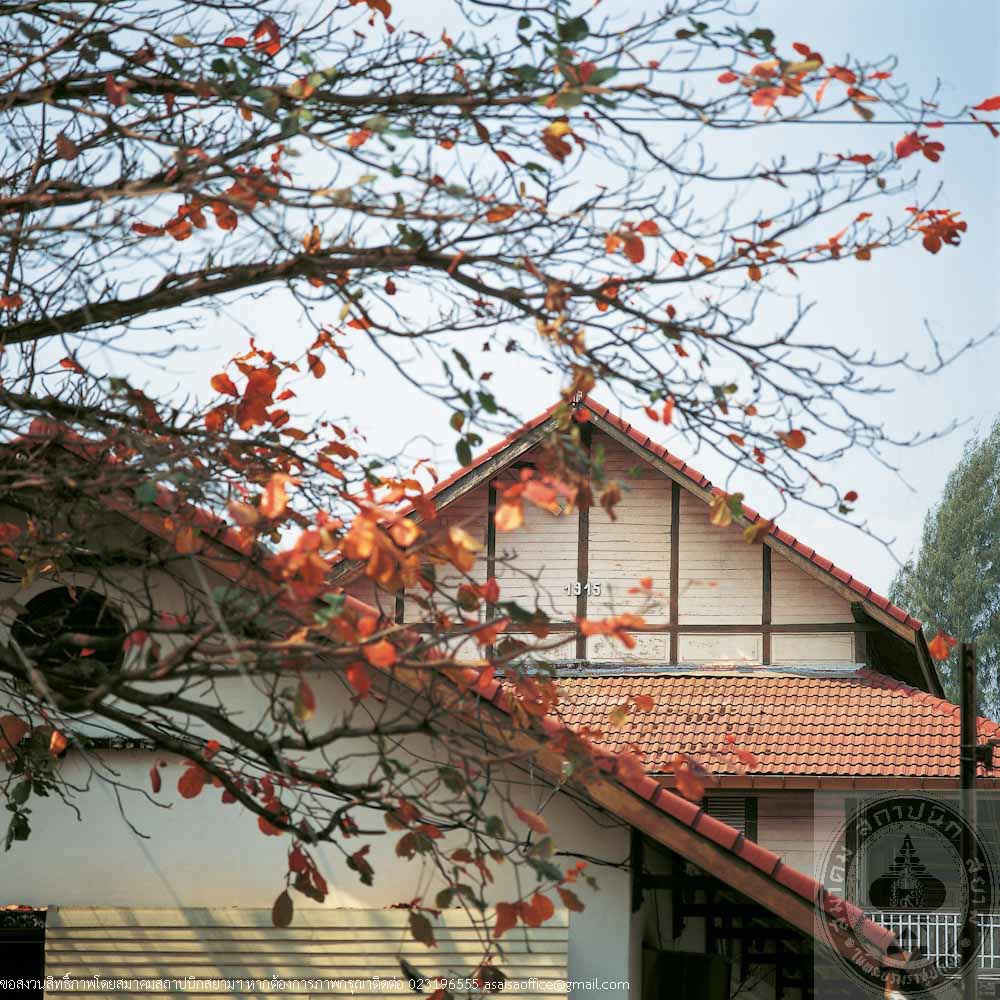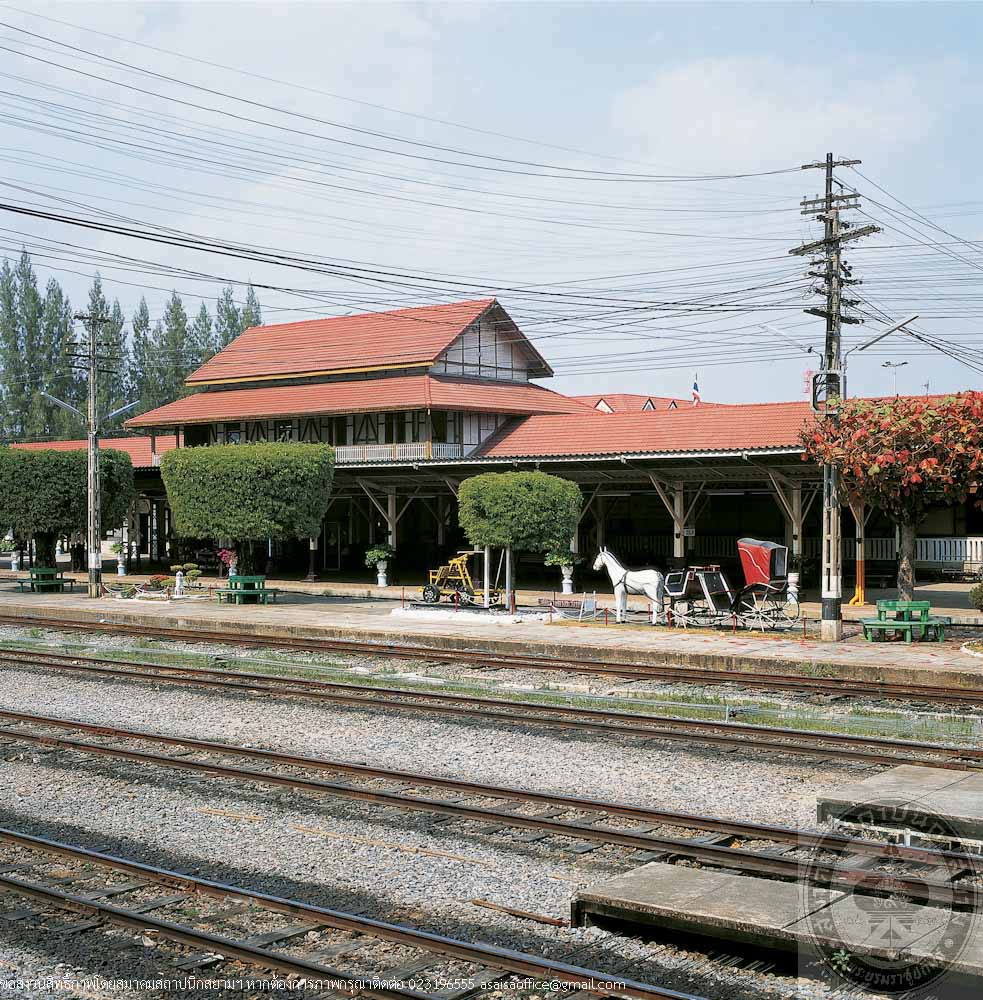สถานีรถไฟลำปาง
สถานีรถไฟลำปาง
ที่ตั้ง อำเภอเมือง จังหวัดลำปาง
สถาปนิก/ผู้ออกแบบ วิศวกรชาวเยอรมัน
ผู้ครอบครอง การรถไฟแห่งประเทศไทย
ปีที่สร้าง พ.ศ. 2459
ปีที่ได้รับรางวัล พ.ศ. 2536
ประวัติ
สถานีรถไฟลำปางเป็นสถานีรถไฟรุ่นแรกๆ ที่สร้างขึ้นในประเทศไทยและยังคงเหลืออยู่ภายหลังสงครามโลกครั้งที่ 1 ออกแบบโดยวิศวกรชาวเยอรมันซึ่งได้รับมอบหมายให้สร้างทางรถไฟสายเหนือ นับว่าการสร้างสถานีรถไฟแห่งนี้ได้นำความก้าวหน้ามาสู่นครลำปางก่อนเชียงใหม่หลายปี เนื่องจากการเจาะอุโมงค์ที่ถ้ำขุนตานยังไม่แล้วเสร็จ ใน พ.ศ. 2506 การรถไฟแห่งประเทศไทยได้จัดส่งหัวรถจักรไอน้ำมาแสดงไว้ที่สถานีรถไฟลำปาง และกำหนดให้สถานีรถไฟแห่งนี้เป็นสถานีประวัติศาสตร์และทำการอนุรักษ์ไว้
รูปแบบของสถานีรถไฟลำปาง เป็นอาคาร 2 ชั้น ก่ออิฐฉาบปูน ผังรูปสี่เหลี่ยมผืนผ้า มีปีก 2 ข้างเชื่อมกับโถงกลาง สถาปัตยกรรมโคโลเนียล มีการใช้โค้ง (Arch) และการประดับตกแต่งด้วยไม้ฉลุและปูนปั้น
อาคารสถานีดังที่เห็นในปัจจุบันได้ผ่านการต่อเติมมาแล้วเป็นบางส่วน โดยเฉพาะช่วงก่อนปี พ.ศ. 2520 มีการต่อเติมส่วนควบคุมบริเวณปีกทางทิศใต้ ส่วนพักคอยด้านติดรางรถไฟและซุ้มด้านหน้าที่จอดรถ จากนั้นมีการเปลี่ยนกระเบื้องหลังคา กระเบื้องพื้น และปรับปรุงพื้นชั้นล่างทั้งหมดในปี พ.ศ. 2538

สถานีรถไฟนครลำปาง

สถานีรถไฟนครลำปาง

สถานีรถไฟนครลำปาง

สถานีรถไฟนครลำปาง

สถานีรถไฟนครลำปาง
-

สถานีรถไฟนครลำปาง
-

สถานีรถไฟนครลำปาง
-

สถานีรถไฟนครลำปาง
-

สถานีรถไฟนครลำปาง
-

สถานีรถไฟนครลำปาง
Lampang Railway Station
Location Amphoe Muaeng, Lampang Province
Architect/Designer A German engineer
Proprietor State Railway of Thailand
Date of Construction 1916 AD.
Conservation Awarded 1993 AD.
History
Lampang Railway Station is one of the first railways stations in Thailand which still exits after the First World War. It was designed by a German engineer who was one of the northern railroad construction team. The construction of this station had marked a development of Lampang to be several further advanced than Chiang Mai, during the time before completion of the Khun Tan displayed at the Lampang Railway Station, which is designated and conserved as a Historic Station.
The station architecture is 2-storey, brick masonry building in Colonial style. Its plan is rectangular with 2 wings connected to the middle hall. Building details comprise arches comprise arches and decorative elements such as woodcarvings and stuccos.
The present building has undergone some additions, especially before 1977 that a control quarter was extended from the south wing, a waiting area beside the railroad and a porch in front of parking lot were added. General repairs were carried out in 1995.